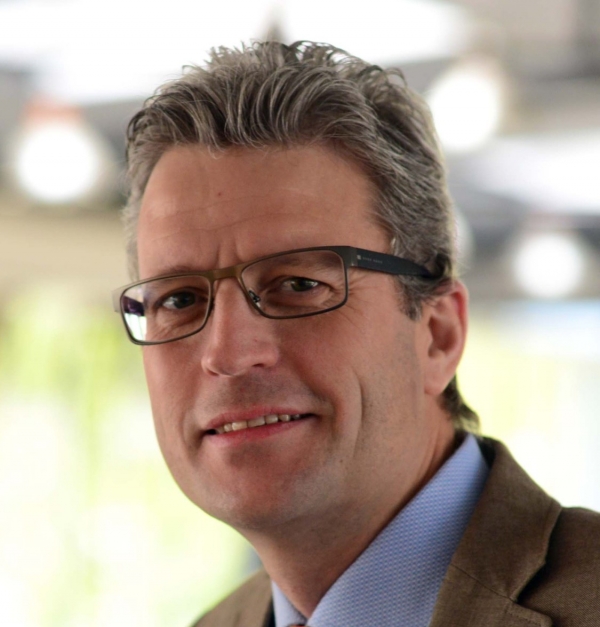Sectional Lectures
Prof. M. Nicolas MOËS
Ecole Centrale de Nantes (France)
TitleA new way to track fronts with eXtreme Mesh deformation (X-MESH)

Biography
Nicolas MOËS is professor at the Ecole Centrale de Nantes (France).
He received his engineering degree from the University of Liège in 1992 and his PhD from the Ecole Normale Supérieure de Cachan under the supervision of Pierre Ladevèze in 1996.
Before joining the Ecole Centrale of Nantes in 2001, he gained research experience in the United States: 2 years at the University of Texas at Austin in the group of Tinsley Oden and 3 years at Northwestern University in the group of Ted Belytschko where he initiated the eXtended Finite Element Method (X-FEM) with colleagues.
His main area of expertise is computational mechanics: fracture and damage (X-FEM, Thick Level Set approach, Lip-field approach), contact mechanics (Inequality Level Set approach) and more recently a novel way to track front (X-MESH).
His fundings are balanced between public funding from France and Europe (ERC Advanced grant in 2012, ERC Synergy Grant 2022 ) and collaborations with a dozen of industries in the past 20 yeas.
He received the young investigator award from the IACM (International Association for Computational Mechanics) in 2006 and was declared IACM fellow in 2008. In 2014, he received the silver medal from CNRS. In 2019, he received the ONERA prize from the French academy of science, in which he was elected two years later. He is also currently member of the Institut Universitaire de France.
He received his engineering degree from the University of Liège in 1992 and his PhD from the Ecole Normale Supérieure de Cachan under the supervision of Pierre Ladevèze in 1996.
Before joining the Ecole Centrale of Nantes in 2001, he gained research experience in the United States: 2 years at the University of Texas at Austin in the group of Tinsley Oden and 3 years at Northwestern University in the group of Ted Belytschko where he initiated the eXtended Finite Element Method (X-FEM) with colleagues.
His main area of expertise is computational mechanics: fracture and damage (X-FEM, Thick Level Set approach, Lip-field approach), contact mechanics (Inequality Level Set approach) and more recently a novel way to track front (X-MESH).
His fundings are balanced between public funding from France and Europe (ERC Advanced grant in 2012, ERC Synergy Grant 2022 ) and collaborations with a dozen of industries in the past 20 yeas.
He received the young investigator award from the IACM (International Association for Computational Mechanics) in 2006 and was declared IACM fellow in 2008. In 2014, he received the silver medal from CNRS. In 2019, he received the ONERA prize from the French academy of science, in which he was elected two years later. He is also currently member of the Institut Universitaire de France.
Abstract
Fronts and interfaces are ubiquitous in mechanics and physics. They appear as the quantity of primal interest in many phenomena as fracture, phase-change, contact, two-phase flow, ... We are interested in the computational tracking of sharp fronts. In the Arbitrary Lagrangian Eulerian approach (ALE), the finite element mesh deforms with the front. The ALE approach has two major drawbacks: (1) carrying fronts over long distances requires frequent remeshing to ensure proper accuracy of both sides of the front and (2) topological changes (front nucleation, coalescence, ...) cannot be handled. To remove these drawbacks which exist because the front is always composed of the same nodes, we introduce a new concept in which nodes may jump in and out from the front as it propagates. For this to happen, some finite elements may become very flat or even zero measure.